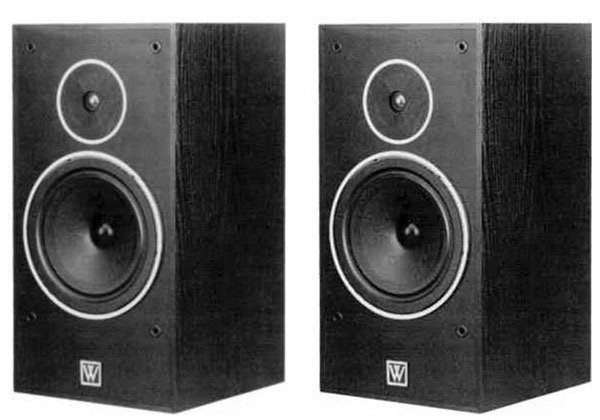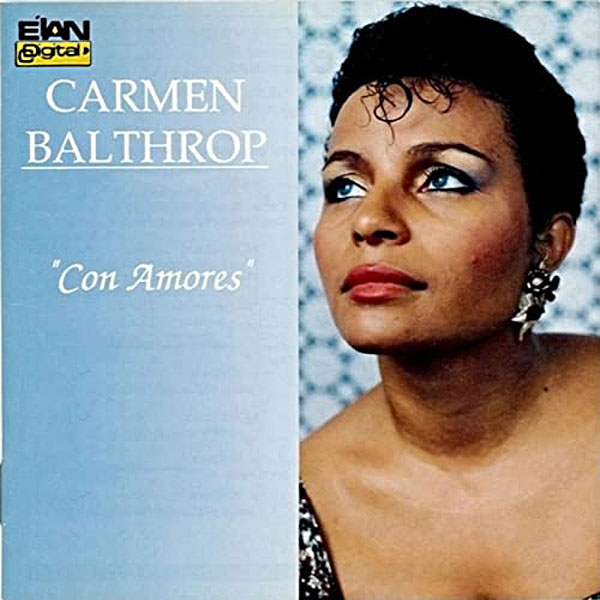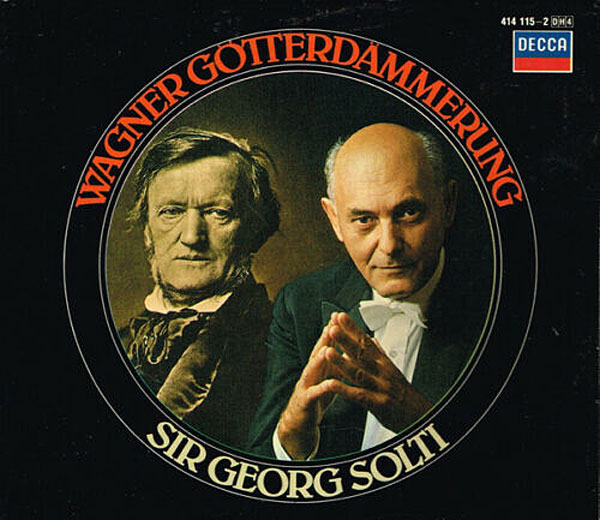| Columns Retired Columns & Blogs |
Yikes:-)

Though these were sealed-box designs, the 507.2 ($940/pair), which still uses that tweeter in conjunction with an 8" polypropylene-cone woofer (6.5" radiating diameter), is now reflex-loaded by a 4"-deep by 3"-diameter port on the rear panel.
Other aspects of the design are familiar from previous Wharfedale designs. The rear panel of the particle-board cabinet is recessed by 1" to add a degree of stiffness to the sidewalls, and rather than fasten the woofer to the baffle with woodscrews or T-bolts, a patented, bayonet-fastening system locks it in place.
Electrical connection is via 4mm binding posts on the rear "tray." The 507.2 is a particularly handsome speaker, in my opinion, being veneered on all surfaces, except the rear, with a real wood that looks like cherry. The brown-cloth grille covers all of the speaker's front except a narrow strip at the bottom bearing the Wharfedale logo. With its veneered baffle, the 507.2 looks "finished"; accordingly, I left the grille off for the auditioning.
The sound
Pink noise revealed that the optimum listening axis was on a level with the tweeter, the 17" stands therefore proving a little low and the 24" stands a little high. Below, and the already forward midrange became more so; above, and a lack of energy became apparent in the upper mids, leaving the tweeter sounding disconnected. In fact, even at a 7' listening distance on the optimum axis, the tweeter still sounded a little wispy and "separated" from the body of the sound, slightly accentuating sibilance and cymbal sound.
Low frequencies had reasonable weight when compared with the Rauna and MB Quart design that I also review in this issue, but without much deep bass apparent, particularly when compared with the Spectrum 208B. Undoubtedly the product of a reflex alignment, the upper bass was soft, the left-hand piano register acquiring a slight "purr" and kick drum acquiring rather more overhang than usual, sounding "slow." Male speaking voice, however, was commendably neutral, and relatively free from the "enlarged chest" syndrome.

The midrange, as indicated above, was rather forward in balance, though this wasn't perceived as a coloration, but more as an accentuation of the treble-clef region. Reproduction of female voice was delicate and unstrained at moderate listening levels, and natural in the relationship between chest and throat tones. Check out Carmen Balthrop's Spanish song recital on Elan 2208 for an example of the kind of natural vocal recording which sounds at its best on these Wharfedales. Violin tone, too, was superbly natural at moderate playback levels, high frequencies being neutral in balance, apart from the aforementioned wispiness.

Note the qualifiers in the above paragraph. The area of dynamics was where the 507.2s fell down, unfortunately. All my positive comments related to average levels between 84dB and 94dB in my 3000ft3 listening room, when I liked the speaker a lot. When the playback level was raised above the mid 90s, however, the sound hardened considerably. Neutral in sound quality with volume low, the 507.2 becomes hard and rather fatiguing at average levels above 94dB, which is too quiet for my tastes. The first presentation of the brass "Siegfried" motif in the prelude to the first act of the Solti Gótterdämmerung, for example, is tonally correct when quiet but fails to uplift, the sound being too small; when loud enough to uplift, the sound becomes unnaturally bright and you want to turn it down. Piano sound was considerably more detailed than with the Spectrum 208B, but only at moderate levels. At higher levels, the sound became similarly clangy with different recordings, regardless of each recorded piano's intrinsic character.
This two-faced nature of the treble also affected imaging. Laterally precise at moderate levels, there was good image depth apparent in the lower midrange, but less so in the upper midrange and treble. Raise the playback level and the stage shallows considerably.
The 507.2 is a "small-signal" loudspeaker. At low to moderate listening levels, it is neutral in tonal balance (apart from a slight accentuation of the mids), offers reasonably good imaging, and has a smooth, fatigue-free treble. With music having any dynamics, however, the sound tends to hardness and becomes rather confused. Sonic schizophrenia!
Conclusion
Beautifully finished and constructed to a high standard, with low levels of coloration, adequate low-frequency extension, and a neutral treble, the 507.2 is let down, in my opinion, by its limited dynamic range. This factor, coupled with a relatively high price, just precludes recommendation in Stereophile's "Recommended Components" list. In small rooms, however, where the hardening of the sound at high levels will not be too much of a problem, the 507.2 will be an excellent loudspeaker for the reproduction of voice and chamber music. And my wife thought it "extremely handsome."

Yikes:-)